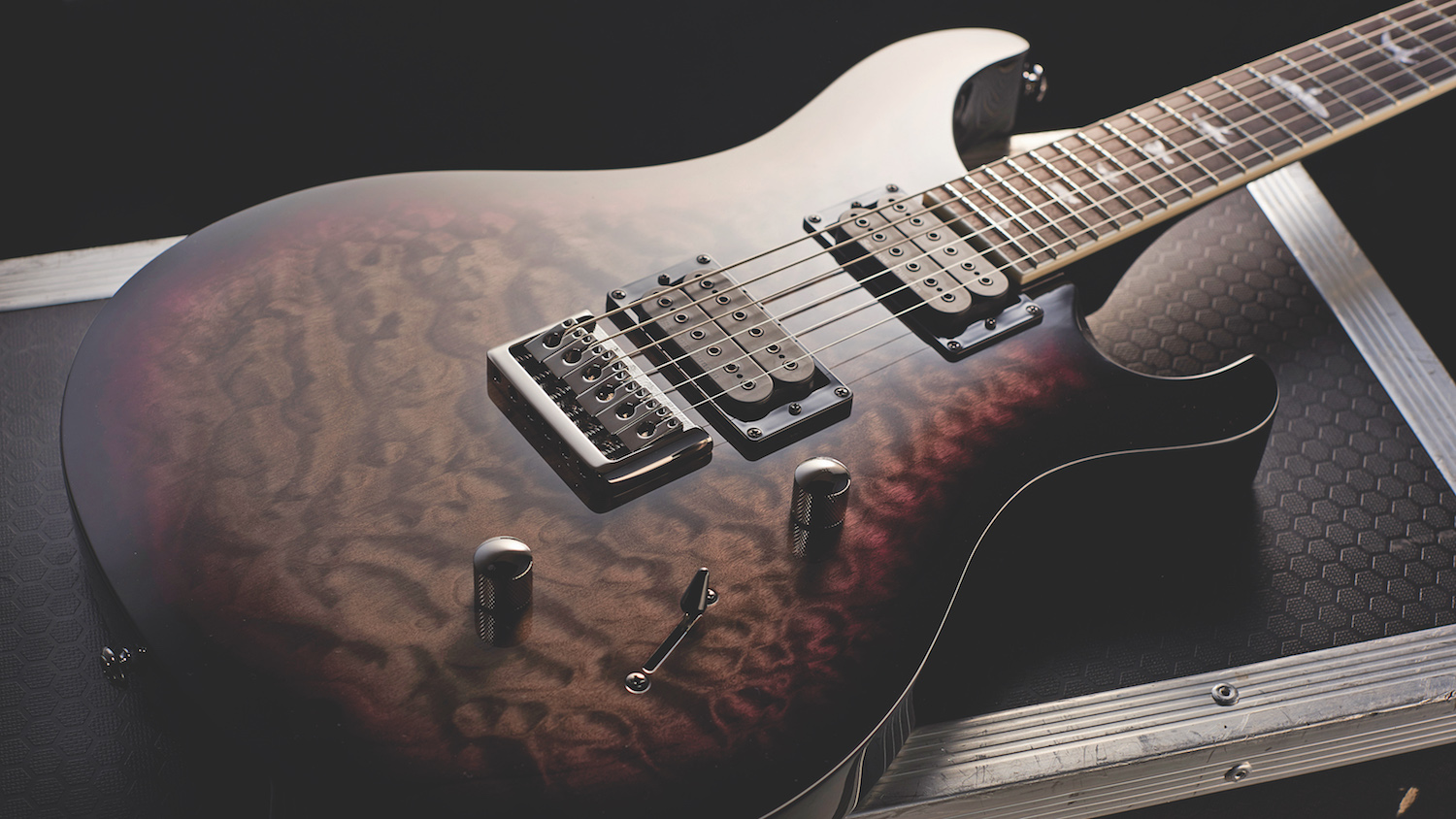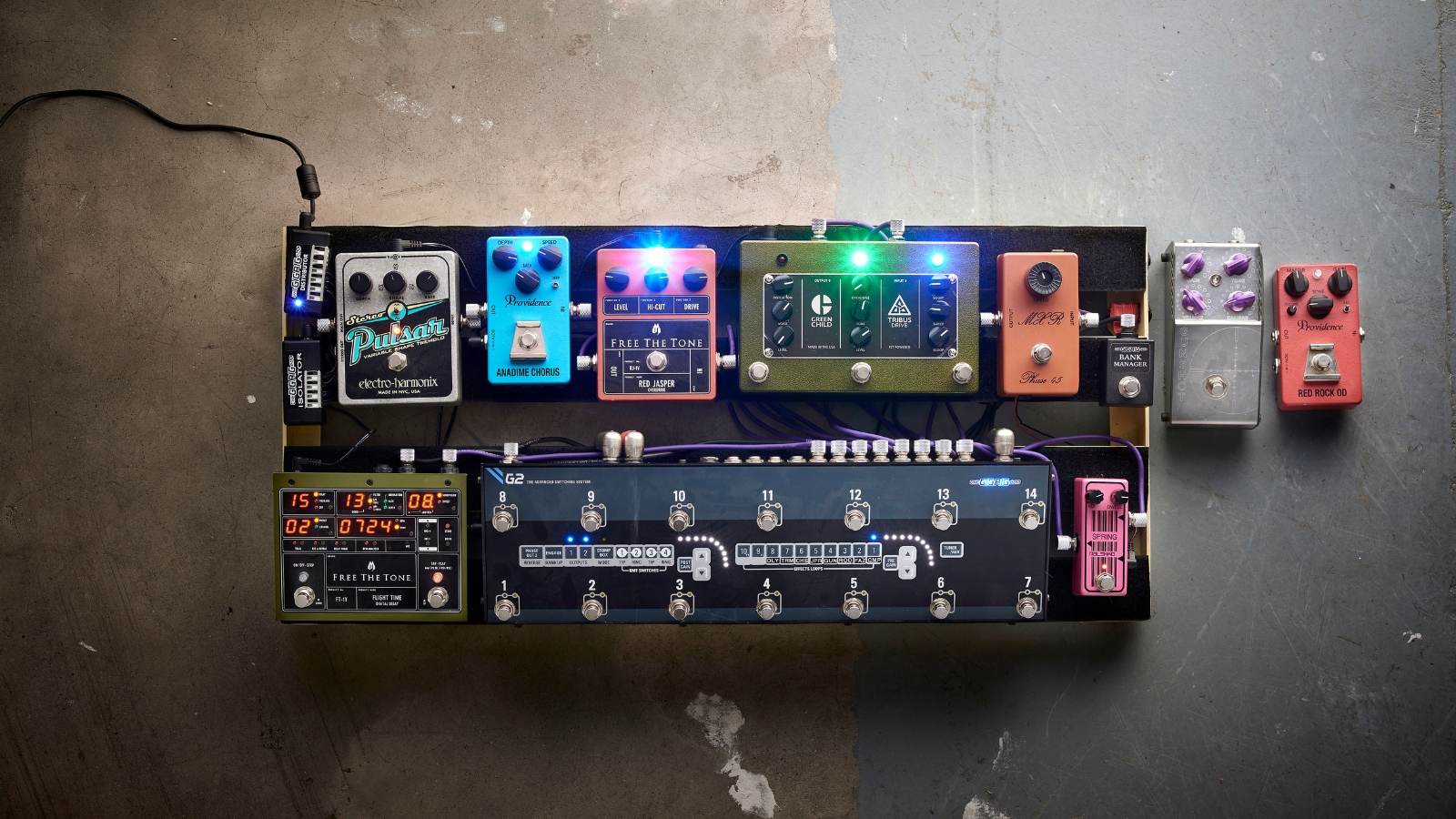10 pedalboard mistakes every guitarist makes
Avoid these common pedalboard mistakes, and you'll be sure to achieve tonal greatness

Many players spend a lifetime curating the ultimate collection of stompboxes with hopes of achieving the greatest electric guitar tone of all time. The only problem is they are most likely making a few key mistakes that are not only holding them back from attaining their sonic goal but also costing them precious time and money. So, if you've put together a pedalboard but are still struggling to nail the sound in your head, let me walk you through the most common blunders I see guitarists make when it comes to their effects.

Looking to assemble a hellraising metal pedalboard for less? Well, here's our ultimate metal-friendly pedalboard for under $500/£450
I'm very aware that guitar tone is completely subjective, and there are no hard and fast rules when it comes to putting together a pedalboard - if it sounds good, then job's a good 'un. That said, there are a few common practices that, when followed, will typically yield the best results.
Before writing for MusicRadar, I worked in a busy city centre music store, selling guitars, pedals and just about everything else music-related. So, as you can imagine, I've seen my fair share of pedalboards - and pedalboard problems. I'm also a very active member of my local gigging circuit, and I can't resist chatting with other players about their boards.
So, below are 10 pedalboard mistakes that I've seen repeatedly on my travels - and that includes 'boards of varying sizes and styles. So, regardless if you have a fully-loaded space-ship control panel or a humble three-stomp floorboard, these are errors you really should be avoiding if you want the best tone possible.

1. No room to grow
As guitarists, we like to collect things. Whether it's six strings, amps, guitar straps or effects pedals, we'll rarely stop at just one or two. So with that in mind, it's worth doing a little forward planning when purchasing your next pedalboard.
It may be tempting to measure your current setup and simply buy a 'board that will fit it perfectly, resulting in a nice and neat floorboard - the problem comes when you inevitably add yet another overdrive pedal to your collection. This will result in you needing to ditch your current 'board in favour of an upgrade.
So, for that reason, I recommend going for a slightly larger pedalboard than you think you need - that way, you have plenty of room to expand.
Want all the hottest music and gear news, reviews, deals, features and more, direct to your inbox? Sign up here.
2. Poor cable management
We can all agree that the pedals are the most exciting part of building a 'board, the cabling not so much. Now, while we all spend a lot of time - and money - making sure we have the right pedals in the correct order, we tend to neglect the cables that link it all together.
Not only is it important to buy good quality and reliable guitar cables, but it's also essential you run the appropriate length of cable needed to reach each pedal comfortably.
You want to make sure the cables aren't too short, causing strain on the connectors and not so long that you end out with an excessive amount of cabling under your 'board that will result in extra noise and signal loss.
3. Ignoring pedal order and signal flow
Now, I'll be the first to admit that I don't subscribe to the notion of there being just one way to order a pedalboard. In fact, I love to experiment with pedal placement to see what cool sounds I can come up with.
The mistake here isn't that most players place their pedals in the wrong order but rather they don't think about the order at all and just haphazardly chain their effects together and hope for the best.
The order in which pedals are connected drastically affects the overall tone, so having a clear idea of the sound you want will inform the best order for your pedals.

4. Not caring about power
We all know that each stompbox has specific power requirements and not paying attention to this can damage the pedal. That said, that's not the only reason you should be concerned about which power supply you are using.
While it may be tempting to opt for a cheaper power supply for your board - especially if you've just spent all your cash on pedals - you could be doing your effects a disservice and adding a lot of unwanted noise to your setup.
That's why I always recommend an isolated power supply - in other words, one where each output powers one pedal only and the power lines do not cross. Not only will this ensure all of your pedals get a consistent amount of current, but it will also help get rid of unwanted noise.
Learn more: Guitar effect pedal power supplies: what you need to know.
5. Maxing out the gain
Most players will have a few gain pedals on their 'board. From a main overdrive and boost to fuzz and distortion, these days, it's rare to have only one source of gain on your 'board. So, with that in mind, it's important to make sure your pedals play nicely together.
Stacking gain pedals can lead to some brilliant and harmonically rich sounds and is the secret to a lot of the pro-guitar sounds you hear live or on records.
The mistake I see more often than not is players maxing out the gain of their first drive pedal, meaning when they stomp on their boost or another drive, their tone falls apart, resulting in a thin and scratchy sound. This is due to a lack of headroom. So I suggest turning the gain down on all your pedals and allowing the combined stomps to deliver the amount of gain you need.
6. Using too many pedals
It's so tempting to have a vast collection of pedals - I'm certainly guilty of this - but in reality, additional pedals won't result in a better or more exciting tone.
An excessive amount of pedals on one board can not only introduce noise but can also complicate your setup, resulting in you spending more time tap-dancing than actually playing the guitar.
In my view, it's more important to prioritise essential pedals and avoid overcrowding your pedalboard with redundant effects. This will result in a cleaner-sounding rig and should make your life easier when you are playing live.

7. Neglecting pedalboard ergonomics
I've covered the order in which pedals are placed in terms of signal flow, but there's actually more to building the ultimate pedalboard than that. It's crucial all your pedals are accessible and that the stomps that are frequently turned off and on during a set are easy to get to, and that buttons aren't too close together.
Placing frequently used pedals within easy reach and considering the size and shape of the pedals for comfortable foot control is incredibly important, and you should spend a fair amount of time working out the optimal placement to ensure your performances go without a hitch.
8. Not using a buffer
In recent years, it seems every pedal boasts that it's true bypass like it's a badge of honour, but an entire pedalboard of true bypass pedals will likely cause some tonal problems.
If you have a large 'board, then the long cable runs and numerous pedals can introduce signal loss and high-frequency roll-off - not ideal if you're trying to achieve the greatest guitar tone of all time.
Adding a buffer pedal at the beginning or end of the signal chain can help maintain the integrity of the guitar's signal and prevent tonal degradation.
Want to know more? Check out our guide to true bypass vs pedal buffers.

9. Not utilizing your effects loop
If you are a fan of super lush delays and spacious reverbs but you aren't using your amp's effects loop, then you may not be getting the best out of your pedals.
It's not exactly wrong to plug all your pedals directly into the front end of your amp, but particularly if you use a fair amount of gain with your time-based effects, then the effects loop can help you gain better control of your ambient effects and stop them washing out your entire sound.
An effects loop essentially allows you to insert your pedals in between the preamp and power section of your amplifier, meaning your delays and reverbs won't get muddied up by the excessive amount of gain hitting the front end of your cranked tube amp.
Learn more: how does the guitar effects loop work?
10. Forgetting backup plans
We all know that things will go wrong at gigs. Whether it's problems with the monitor mix or your drummer having one too many and transforming your lo-fi indie band into a thrashcore group for one night only, you are guaranteed that things will go awry at some point - and of course, this extends to your pedals.
So with that in mind, having a backup plan is crucial. While I can't help with your drummer's tempo-keeping, I can recommend that you always carry spare cables, batteries and even a few essential pedals to ensure if something on your board goes down, your performance can carry on.
Looking for even more stompbox advice? Our buyer's guides are here to help
- Find your perfect tone with the best multi-effects pedals
- Get pedal loopy with the best looper pedals
- Add one of the best guitar tuners to your board
- Give your tone a shake-up with the best tremolo pedals
- These are the best guitar effects pedals in all categories
- On a tight budget? Here are the best cheap guitar pedals

I'm a Senior Deals Writer at MusicRadar, and I'm responsible for writing and maintaining buyer's guides on the site. As part of my role, I also scour the internet for the best deals I can find on gear and get hands-on with the products for reviews. My gear reviews have been published in prominent publications, including Total Guitar, Guitarist, and Future Music, as well as Guitar World.com. I've also had the privilege of interviewing everyone from Slash to Yungblud, as well as members of Sum 41, Foo Fighters, The Offspring, and many more.
In a previous life, I worked in music retail, selling everything from digital pianos to electric guitars. I'm also a fully qualified sound engineer who holds a first-class Bachelor's degree in Creative Sound Production from the University of Abertay.